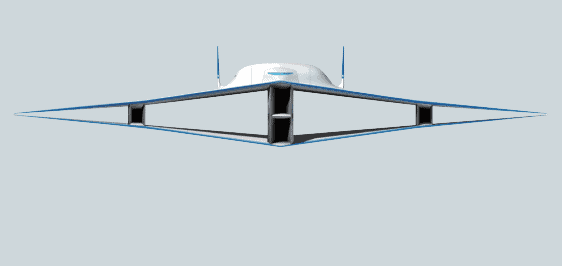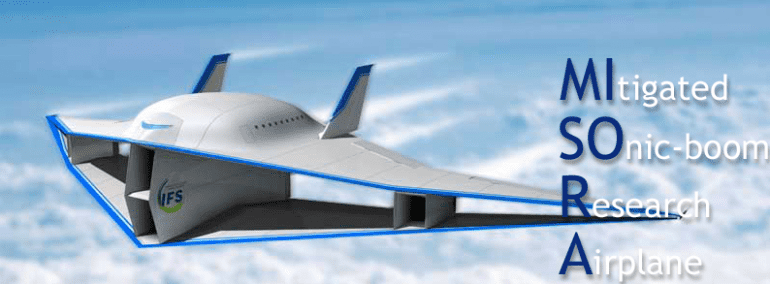The now retired Concorde turbojets were the fastest civilian airliners in the world, capable of carrying passengers from Paris to New York in just 3.5 hours, traveling at supersonic speeds. However, lack of market appeal, combined with high maintenance costs, lead to its regrettable retirement from service with no civilian airliner to replace it, not even to this day, almost ten years since it was decommissioned. One of the main faults which lead to the Concorde’s demise, however, was actually the sonic boom effect which the aircraft produced as it broke the speed of sound limit – a excruciating noise which is terribly upsetting to the human ear. Now engineers at MIT have managed to design an biplane which is cheaper, a lot more fuel efficient and not nearly as noisy as its conventional supersonic counterparts.
A sonic boom occurs when an airplane travels at a speed faster than sound; as density waves of sound emitted by the plane cannot precede the plane, and so accumulate in a cone behind the plane. When this shock wave passes, a listener hears all at once the sound emitted over a longer period, and it’s terribly noisy. To combat this dreaded supersonic effect, Qiqi Wang, an assistant professor of aeronautics and astronautics at MIT, proposes a new solution – instead of flying with one wing to a side, he suggests using two.
“The sonic boom is really the shock waves created by the supersonic airplanes, propagated to the ground,” Wang says. “It’s like hearing gunfire. It’s so annoying that supersonic jets were not allowed to fly over land.”
A biplane design that cancels sonic boom isn’t an entirely novel concept. It’s been first suggested by German engineer Adolf Busemann during the 1950s, after he moved to the U.S. to work as an advanced airplane designer. He theorized that that two wings could cancel out the double-headed problem of sonic booms, fact confirmed by the joint team of researchers at MIT and Tohoku University, Japan, by allowing air to pass between them and thus cancel out the sonic boom. His design, though brilliant, had one major flaw to it – at subsonic speeds it couldn’t generate lift, so basically it couldn’t get off the ground.
The biplane design developed by the MIT team was subjected to a computer simulation and not only did it perform brilliantly with very small sonic boom noise, but it also could function (fly) at subsonic speeds. Also, the craft is a lot more efficient as well, since it’s very light. According to the researchers, the plane was able to fly at supersonic speeds, with half the drag of conventional supersonic jets such as the Concorde, thus allowing for operation at half of the fuel consumption.
“If you think about it, when you take off, not only do you have to carry the passengers, but also the fuel, and if you can reduce the fuel burn, you can reduce how much fuel you need to carry, which in turn reduces the size of the structure you need to carry the fuel,” Wang says. “It’s kind of a chain reaction.”
The researchers claim they’ll move next on developing a 3-D model simulation such that other factors affecting flight might be taken into consideration. Don’t expect this supersonic marvel to enter the realm of reality any time too soon, though.
The group will publish their results in the Journal of Aircraft.
[Images courtesy of Tohoku University / MIT press release]








